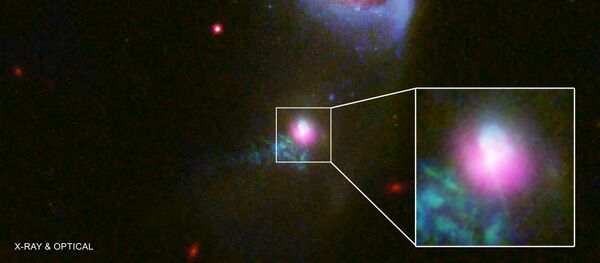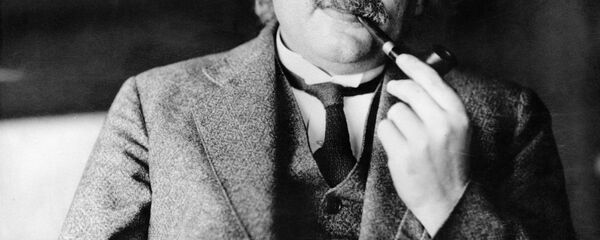Over 100 years prior to the modern-day findings, Einstein famously found that black holes, which can hardly be subjected to conventional research and measuring, are locked into an orbit around one another making so-called binary black holes, and will eventually fall toward each other and merge.
The extraordinary force of impact generating so-called gravitational waves, and first researched by Einstein back in 1915, was further studied at length by ESA, which referred to the said waves as “fluctuations in the fabric of time” in line with Einstein’s ingenious theory of relativity, the agency’s website says.
“Karl Schwarzschild derived the equations for black holes in 1916, but they remained rather a theoretical curiosity for several decades, until X-ray observations performed with space telescopes could finally probe the highly energetic emission from matter in the vicinity of these extreme objects”, ESA said adding that the first ever image of a black hole’s dark silhouette was captured only recently by the Event Horizon Telescope and made headlines when it was published just last month, with its shape “cast against the light from matter in its immediate surrounding”.
ESA went on to comment about the phenomenon of gravitational waves, paying tribute to Einstein’s breakthrough discovery, which was notably proved several years later during a solar eclipse in 1919:
“As for gravitational waves, it was Einstein himself who predicted their existence from his theory, also in 1916, but it would take another century to finally observe these fluctuations”.
Einstein’s theory suggests that light curves and bends when it passes near a large mass or gravity, such as a planet or a black hole, which essentially means that the light from a distant star will arrive on Earth at a certain angle between Earth’s surface and the point where it originated from.
“An artistic view of this distortion, also known as gravitational lensing, is depicted in this representation of two merging black holes”, ESA added.
Meanwhile, astronomers have yet to observe a black hole merger directly, with a range of current and upcoming experiments, such as ESA’s LISA probe, aiming to detect gravitational waves from orbit. Separately, another ESA project, the X-ray lab Athena is expected to be launched alongside LISA in the 2030s. ESA is pinning great hopes on the experiments expressing certainty that the findings will usher in a new era of our understanding of the universe:
“We don’t know what happens during such a cosmic clash so this experiment, much like the eclipse of 1919 that first proved Einstein’s theory, is set to shake our understanding of gravity and the universe”, the agency pointed out.
Black holes are tremendously powerful wells of gravity that engulf even light that cannot escape their mighty pull. The phenomenal cosmic bodies, which are severely understudied as of today, are thought to form when a dying star that has had little fuel left, collapses and gets all of its weight compressed into one small point.
Last month, in a series of press conferences held simultaneously across the world, an international team of scientists proudly presented to the audience the very first photo of a black hole, allowing people to enjoy the sight of the hot, shadowy edges of one of these enigmatic celestial bodies.
As researchers explained, while the black hole itself cannot be seen because no light could escape its gravity, one can see a black hole’s shadow produced by a ring of light circling the event horizon.
READ MORE: WATCH Astronomers Reveal First Ever PHOTO of Black Hole





